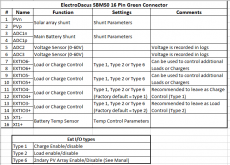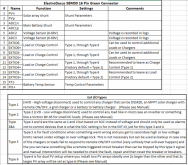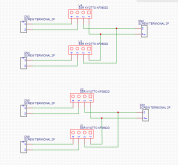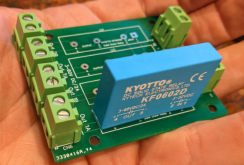I did not go over it with a fine tooth comb but as I scanned it only one thing jumped out at me: What is the purpose of the PC817 opto-coupler board? It looks like you are just trying to use it to control multiple items on ExtIO4 ( DSSR20s and the MultiPlus) and ExtIO5 (Orian and Battery-Protect).
I am pretty sure the Orion and Battery protect can both be controlled by a 24 volt nominal signal. Just put 24V on ExtIO5+ through a 470-1Kohm resistor and then use ExtIO5- to drive the pins on the Orion and the Battery protect. (I am pretty sure the Orion and the battery protect controls are pretty high impedence so they need very little current. However, you need to measure the current the draw before you hook them directly to the SBMS0. It can only handle 50mA)
ExtIO4 may still need a circuit to split them out but I don't know if the PC817 will work for you.
1) The input circuit is is rated for 3.6-24V but your system voltage is going to range from ~24-29V. I would be worried about burning out the inputs.
2) I can't tell enough about the PC817 outputs to say for sure if it will drive the DSSR20s, but I *think* if you jumper it to pull down and put the DSSR across 'G' and 'O' it will work. (You might have to try switching the leads to make it work if it is not a bi-directional path on the output. The same comments apply to driving the MultiPlus.
Note: I have looked a little for multi-channel isolator boards with better input voltages but have not found one. I ended up building this:
View attachment 30600
Each of the inputs is split out into 2 outputs through a 2A DC-DC SSR. It was designed for the Chargery but could be used for the electrodacus.
The input is 3-32V and the output is 3-60V/2A.
I even had some PC boards made for the design.
View attachment 30601
I am waiting on parts to test it. Once I have it proved out I will write up a resource about it.
BTW: I see you found my inverter disconnect and I/O summary resources.

At the end of the I/O sumary are a couple of sample designs that you might find interesting.








